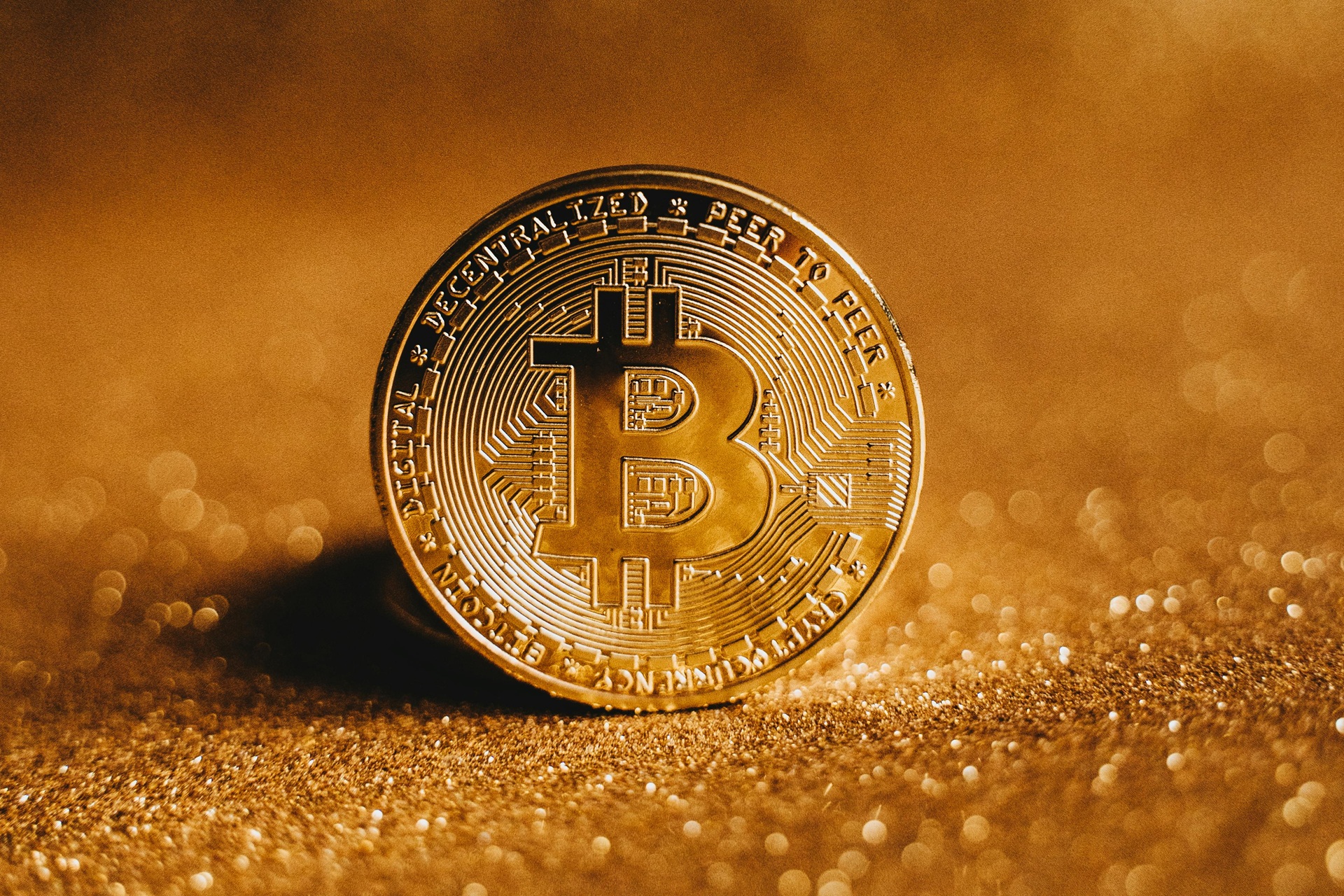
Introduction
The digital finance landscape is evolving at a rapid pace, and stablecoins have emerged as a critical nexus between traditional monetary systems and the burgeoning cryptocurrency market. Over the past couple of years, stablecoins have not only grown in market capitalization and usage but have also spurred innovation across technological, regulatory, and real-world applications.
In this post, we explore the latest trends and developments in the stablecoin ecosystem—from explosive market growth and advanced smart contract mechanisms to comprehensive regulatory frameworks and diverse use cases—highlighting why stablecoins are poised to reshape global finance in the coming years.
"Stablecoins represent the digital currency bridge to tomorrow's economy—combining the stability of traditional finance with the innovation of blockchain technology."
What Are Stablecoins and Why Do They Matter?
Stablecoins are a special class of cryptocurrency designed to reduce the extreme volatility seen in other digital assets. They achieve this stability by pegging their value to a reserve asset such as the U.S. dollar, a basket of currencies, or even commodities like gold.
Types of Stablecoins
-
Fiat-Collateralized
Backed by traditional currencies held in reserve, offering straightforward stability through direct asset backing.
-
Crypto-Collateralized
Secured by other cryptocurrencies, often over-collateralized to handle price swings and maintain stability.
-
Algorithmic
Rely on computer algorithms to control monetary supply without requiring traditional collateral backing.
-
Hybrid Models
Combine elements of collateral backing and algorithmic supply adjustments to optimize stability and scalability.
Stablecoins have evolved significantly since their introduction, addressing early challenges related to transparency, scalability, and trust. Their development has been critical to fostering wider adoption of blockchain technology and serving as a gateway for institutional and retail investors alike.
Explosive Market Growth and Shifting Market Share
The stablecoin market has experienced remarkable growth over the past few years. The total market capitalization, which stood at approximately $130–134 billion in early 2023 and early 2024, has now surged to an estimated range of $251.7 billion to $270 billion by mid-2025. This acceleration in growth underscores the increasing confidence in stablecoins as a reliable digital asset, now accounting for roughly 7% of the overall crypto market.
Trading Volumes and On-Chain Activity
Record on-chain activity has also been observed, with global stablecoin transaction volumes exceeding $8.9 trillion in the first half of 2025. Despite fluctuations in centralized exchange metrics, this on-chain record highlights the robustness of stablecoins as a medium for rapid, high-volume transfers.
Dominant Players and New Entrants
While long-established coins like USDT (Tether) continue to claim leadership with over $150 billion in market cap, USDC (Circle) remains a close contender at $70–75 billion. The landscape is also witnessing the rise of innovative entrants like Ethena USDe, which has quickly grown to over $13 billion in market capitalization. These shifts illustrate a maturing market where established players coexist with dynamic new projects.
The explosive growth in stablecoin market capitalization and transaction volumes demonstrates their increasing role as the backbone of digital finance, facilitating everything from DeFi protocols to cross-border payments with unprecedented efficiency.
Technical Innovations and Mechanism Evolution
Technology is at the heart of the stablecoin revolution. Recent innovations have not only enhanced stability but have also expanded the potential applications of these digital assets.
Hybrid and Algorithmic Models
A growing trend in the space is the emergence of hybrid stablecoins. Projects like Frax (FRAX) are pioneering models that blend traditional collateral backing with algorithmic supply adjustments. These models dynamically alter their collateral ratios to maintain stability while supporting scalability—offering a promising balance between security and flexibility.
-
Dynamic Collateral Ratios
Systems that automatically adjust backing based on market conditions, optimizing both stability and capital efficiency.
-
Rebasing Mechanisms
Algorithms that adjust token supply to maintain price stability, though facing adoption challenges due to user experience complexity.
-
Seigniorage Models
Systems that use protocol-controlled value to maintain pegs through supply expansion and contraction mechanisms.
Advanced Smart Contracts and Automated Systems
Stablecoins like DAI from MakerDAO leverage cutting-edge smart contracts to manage collateral automatically, assess risk dynamically, and enable decentralized governance. Such technical sophistication ensures that these tokens remain resilient even as market conditions evolve.
-
Automated Risk Management
Smart contracts that monitor collateral health and execute liquidations automatically to maintain system stability.
-
Decentralized Governance
Community-driven decision making for protocol parameters, ensuring democratic control over stablecoin mechanisms.
-
Real-Time Transparency
On-chain auditing and live reserve attestations that provide unprecedented visibility into stablecoin backing.
Scaling and Transparency Measures
Issuance on high-throughput blockchains and layer-2 networks—such as Polygon, Arbitrum, and Base—has dramatically reduced transaction fees and improved processing times. In addition, real-time on-chain auditing and transparent reserve attestations have become standard practices, building trust among users and regulators alike.
Regulatory Developments and Policy Clarity
As stablecoins intertwine with the global financial system, regulatory clarity has become paramount. Recent legislative and regulatory actions across various jurisdictions are setting the stage for more consistent and secure adoption.
United States: The GENIUS Act
The passage of the GENIUS Act in July 2025 marks a significant milestone. This comprehensive federal framework mandates 1:1 reserve backing, redemption rights, and strict AML/CTF compliance, effectively limiting issuance to regulated entities.
-
1:1 Reserve Requirements
Mandatory full backing of stablecoins with high-quality liquid assets, ensuring redeemability at par value.
-
AML/CTF Compliance
Comprehensive anti-money laundering and counter-terrorism financing requirements for all stablecoin issuers.
-
Regulated Entity Requirements
Restriction of stablecoin issuance to licensed financial institutions and regulated entities only.
International Regulatory Landscape
-
European Union - MiCA
Markets in Crypto-Assets regulation imposing licensing, reserve, and transparency requirements overseen by the European Banking Authority.
-
United Kingdom
Financial Services and Markets Act 2023 integrating stablecoins into payments regulation with Bank of England oversight.
-
Asia-Pacific
Singapore and Japan implementing robust licensing and audit procedures with restricted issuance to regulated entities.
-
Global Coordination
FSB and FATF efforts to harmonize standards, tackling systemic risks and preventing regulatory arbitrage.
The emergence of comprehensive regulatory frameworks is providing the clarity and confidence needed for institutional adoption while ensuring consumer protection and financial stability. This regulatory maturation is accelerating mainstream acceptance of stablecoins.
Major Projects and New Entrants
A host of established projects and fresh entrants continue to shape the stablecoin landscape, each bringing unique approaches to stability, compliance, and utility.
Established Market Leaders
-
USDT (Tether)
The most liquid and widely used stablecoin, remaining a key player despite scrutiny over its reserve transparency.
-
USDC (Circle)
Known for its emphasis on regulatory compliance and monthly reserve audits, building institutional trust.
-
DAI (MakerDAO)
Continues to be central to decentralized finance (DeFi), providing a decentralized counterpart to fiat-backed stablecoins.
Innovative New Entrants
-
PayPal USD (PYUSD)
Introduced in 2023, leveraging PayPal's extensive network to integrate stablecoins into mainstream payments and e-commerce.
-
Ripple USD (RLUSD)
Launched in 2024, specifically targeting institutional and cross-border transactions with regulatory adherence and rapid settlement.
-
Frax (FRAX)
Leading the hybrid model revolution, blending collateralized and algorithmic mechanisms for optimal stability and scalability.
-
Ethena USDe
Rapidly growing to over $13 billion in market cap, representing innovative approaches to stablecoin design and adoption.
Commodity-Backed Alternatives
Tokens like Tether Gold (XAUt) and Paxos Gold (PAXG) offer a hedge against inflation by linking digital assets to gold, providing alternative stability mechanisms beyond fiat currencies.
Expanding Use Cases and Integration
The utility of stablecoins extends well beyond mere trading. Their integration across multiple sectors is driving a transformative impact on global commerce and finance.
Decentralized Finance (DeFi)
Stablecoins serve as the backbone for numerous DeFi protocols, providing much-needed liquidity, collateral, and support for lending, borrowing, yield farming, and programmable payments. In volatile markets, they act as a safe harbor for investors.
-
Liquidity Provision
Serving as the primary medium for DeFi liquidity pools, enabling efficient trading and yield generation.
-
Lending and Borrowing
Providing stable collateral for decentralized lending protocols, enabling predictable borrowing costs.
-
Programmable Payments
Enabling automated, condition-based payments through smart contracts for complex financial arrangements.
Cross-Border and B2B Payments
In emerging markets, stablecoins are revolutionizing remittances and enterprise payments by significantly reducing transaction fees and settlement times. For example, countries like Turkey have reported robust cross-border stablecoin activity, streamlining global money flows.
Financial Inclusion and Traditional Finance Integration
-
Financial Access
Providing critical financial access in regions facing high inflation or limited banking infrastructure.
-
Corporate Treasury
Traditional corporations adopting stablecoins for treasury management, real-time payroll, and cash management solutions.
-
Payment Integration
Major payment networks like Visa and Mastercard integrating stablecoin rails for instant, low-cost settlement.
Tokenization of Real-World Assets
By enabling the tokenization of assets such as government bonds, real estate, and commodities, stablecoins are creating opportunities for novel financial products and more efficient settlement processes.
Stablecoins are becoming the foundational infrastructure for the next generation of financial services, enabling everything from instant cross-border payments to sophisticated DeFi protocols and tokenized real-world assets.
Market Data and Adoption Trends
The numbers speak for themselves regarding stablecoin adoption and impact on global finance. In 2024, stablecoins processed over $27.6 trillion in transactions, with more than $6.6 trillion processed in just the following 12 months.
Institutional Adoption Statistics
Institutional adoption statistics are equally compelling—approximately 33% of global finance leaders have already integrated stablecoins into their operations, and as many as 86% are open to adopting them within the next three years.
Geographic Hotspots
Regions such as India, Nigeria, Indonesia, Turkey, and Argentina have emerged as stablecoin hotspots, driven by remittances, inflation hedging, and DeFi participation. These markets demonstrate the transformative potential of stablecoins in addressing real-world financial challenges.
-
Emerging Market Leadership
Countries facing currency instability are leading stablecoin adoption, using them as stores of value and mediums of exchange.
-
Remittance Revolution
Cross-border payments via stablecoins are reducing costs by up to 90% compared to traditional remittance services.
-
Inflation Hedging
Citizens in high-inflation economies are using dollar-pegged stablecoins to preserve purchasing power and protect savings.
Future Outlook and Expert Predictions
Looking ahead, the stablecoin market is expected to continue its robust growth and drive deeper integration with traditional financial systems. Key trends shaping the future include technological advancements, regulatory evolution, and broader financial integration.
Technological Advancements
-
Enhanced Smart Contracts
Further improvements in smart contract technology will enable even more sophisticated stablecoin designs with advanced risk management and automated governance features.
-
Cross-Chain Interoperability
Seamless movement of stablecoins across different blockchain networks will enhance utility and reduce friction in multi-chain ecosystems.
-
Blockchain Scalability
Continued improvements in blockchain infrastructure will support higher transaction volumes and lower costs for stablecoin operations.
Regulatory Evolution
As regulators mature in their understanding of digital assets, we can expect additional clarity and harmonization, which will further solidify confidence in stablecoins among institutional users.
-
Global Standards
International coordination will lead to more consistent regulatory frameworks, reducing compliance complexity for global stablecoin operations.
-
Central Bank Integration
Collaboration between stablecoin issuers and central banks may lead to hybrid models that combine private innovation with public oversight.
-
Consumer Protection
Enhanced regulatory frameworks will provide stronger consumer protections while fostering innovation in the stablecoin space.
Broader Financial Integration
Experts predict that stablecoins will increasingly serve as a bridge between legacy financial institutions and the digital asset ecosystem, fostering new financial products and services designed for the modern age.
The Vision for Tomorrow's Economy
Stablecoins are laying the foundation for a more efficient, inclusive, and interconnected global financial system
The future economy powered by stablecoins will be characterized by instant settlement, programmable money, and seamless integration between digital and traditional financial services. This transformation promises to:
-
Enable 24/7 Global Commerce
Instant, round-the-clock settlement of transactions across borders without traditional banking delays or restrictions.
-
Democratize Financial Services
Provide access to sophisticated financial tools for underserved populations worldwide, reducing inequality in financial access.
-
Create Programmable Money
Enable smart contracts that automatically execute complex financial agreements, reducing costs and eliminating intermediaries.
-
Foster Economic Innovation
Support new business models and economic structures that leverage the unique properties of digital currencies.
Industry experts predict that by 2030, stablecoins will handle over $10 trillion in annual transaction volume, becoming the preferred medium for international commerce and serving as the backbone for a new generation of financial services built on blockchain technology.
Conclusion and Key Takeaways
Stablecoins have undeniably become a core pillar of both the crypto and traditional finance sectors. Their explosive market growth, technical innovation, and expanding real-world applications underscore their potential to revolutionize global finance.
Key Takeaways
-
Rapid Market Expansion
With market capitalization and transaction volumes soaring, stablecoins are more relevant than ever, representing a fundamental shift in how we think about digital money.
-
Technical and Regulatory Evolution
Advanced mechanisms—ranging from hybrid models to automated smart contracts—combined with emerging regulatory frameworks, are paving the way for safer and more scalable solutions.
-
Diverse Use Cases
From powering DeFi protocols and streamlining cross-border payments to enabling financial inclusion and real-world asset tokenization, stablecoins offer multifaceted benefits.
-
Bright Future Ahead
Continued technological improvements and clearer regulatory guidelines are set to further integrate stablecoins into the global financial fabric.
"As stablecoins mature and become more deeply entrenched in our financial systems, they promise to deliver a more efficient, inclusive, and resilient monetary landscape."
Whether you're an investor, policymaker, or industry professional, staying informed and adapting to these trends will be key to navigating the future of digital finance. The stablecoin revolution is not just about technology—it's about reimagining how money works in a digital-first world.
The bridge to tomorrow's economy is being built today, and stablecoins are the foundational pillars supporting this transformation. By understanding and embracing these developments, we can all participate in shaping a more connected, efficient, and equitable financial future.


